Crispy Seared Ahi Tuna Recipe: Ocean’s Jewel on Your Plate
Crisp ocean breezes and vibrant flavors collide in this exceptional seared ahi tuna recipe that promises restaurant-quality dining at home.
Fresh tuna steaks sizzle with a delicate pepper crust, creating an irresistible golden exterior.
Tender, ruby-red fish demands a light touch and precise technique to showcase its natural richness.
Each slice reveals a perfect balance between delicate inner flesh and beautifully caramelized edges.
Simple ingredients blend seamlessly to transform an ordinary meal into a gourmet experience.
The result is a dish that looks impressive but comes together in mere minutes.
Dive into this culinary adventure and elevate your seafood game with a recipe that’s sure to impress.
Seared Ahi Tuna: What Makes It Special
Must-Have Ingredients for Seared Ahi Tuna
Protein:Marinade Components:Cooking and Seasoning Ingredients:Seared Ahi Tuna – How to Make It
Step 1: Craft Flavor-Packed Marinade
Blend together soy sauce, freshly cracked black pepper, toasted sesame oil, olive oil, wildflower honey, and bright lemon juice in a mixing bowl.
Whisk enthusiastically until ingredients create a harmonious sauce with rich, glossy appearance.
Step 2: Submerge Tuna in Marinade
Gently place tuna steaks in a shallow ceramic or glass container.
Pour marinade completely over fish, ensuring each side gets evenly coated.
Turn steaks to guarantee full flavor absorption.
Step 3: Chill and Infuse
Cover container with tight-fitting lid or plastic wrap.
Slide into refrigerator and allow tuna to marinate, letting flavors deeply penetrate for 3-6 hours.
This patient waiting creates incredibly tender, tasty fish.
Step 4: Prepare Cooking Surface
Select cast iron skillet or heavy-bottomed pan.
Drizzle coconut oil, heating surface until it reaches smoking point.
High temperature ensures beautiful caramelized exterior.
Step 5: Perfect Searing Technique
Carefully place marinated tuna onto scorching hot surface.
Cook precisely 45-60 seconds per side, creating gorgeous golden-brown crust while maintaining rare, silky interior.
Step 6: Let Meat Rest
Transfer seared tuna to clean cutting board.
Allow fish to rest 5 minutes, letting internal juices redistribute and ensuring maximum tenderness.
Step 7: Slice and Garnish
Cut tuna against natural grain using sharp knife.
Sprinkle with toasted sesame seeds for delightful crunch and visual appeal.
Serve immediately for restaurant-quality experience.
Tips for Perfect Seared Ahi Tuna
Creative Seared Ahi Tuna Variations
Serving Seared Ahi Tuna
Storage for Seared Ahi Tuna
FAQs
Fresh tuna is recommended for best texture and flavor, but if using frozen, thaw completely and pat dry before marinating to ensure proper searing.
Sushi-grade ahi tuna or yellowfin tuna are ideal for this restaurant-style recipe, providing the best taste and texture for searing.
Aim for a golden-brown exterior while keeping the center rare or medium-rare. The total cooking time of 45-60 seconds per side helps maintain the tuna’s delicate texture.
A cast iron skillet provides the best heat distribution and creates an excellent sear, but a heavy-bottomed stainless steel pan can also work well if cast iron isn’t available.
Print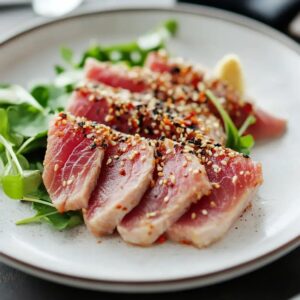
Seared Ahi Tuna Recipe
- Total Time: 20 minutes
- Yield: 2 1x
Description
Succulent Seared Ahi Tuna brings Pacific Ocean flavors directly to your plate with restaurant-quality precision. Fresh tuna steaks kissed by high heat create a perfect golden crust while maintaining a silky, rare center that melts in your palate.
Ingredients
Main Protein:
- 1–1.5 pounds (0.45–0.68 kilograms) ahi tuna steaks
Seasonings and Sauces:
- 3 tablespoons soy sauce
- 1 tablespoon everything but the bagel seasoning
- 1/2 teaspoon salt
- 1/2 teaspoon black pepper
- 1 tablespoon hot honey (or regular honey)
- 1 tablespoon sesame oil
- Juice of 1 lemon
Cooking and Garnish:
- 3 tablespoons coconut oil for cooking
- Black sesame seeds for garnish
Instructions
- Blend marinade ingredients in a non-reactive bowl, creating a harmonious mixture of tangy and sweet flavors with soy sauce, oils, honey, and lemon juice.
- Gently submerge tuna steaks in marinade, ensuring complete coating and maximum flavor absorption.
- Seal container and allow tuna to marinate in refrigerator for 3-6 hours, letting seasonings penetrate deeply.
- Select a cast iron skillet and heat coconut oil until it reaches a smoking point, creating an ideal searing environment.
- Carefully place marinated tuna into scorching hot skillet, cooking each side for 45-60 seconds to develop a caramelized exterior while maintaining a rare to medium-rare center.
- Transfer seared tuna to resting board, allowing internal temperature to stabilize and juices to redistribute for approximately 5 minutes.
- Slice tuna against grain into elegant medallions, presenting a restaurant-quality presentation.
- Sprinkle toasted sesame seeds over sliced tuna for a nutty garnish and textural contrast.
Notes
- Opt for sushi-grade tuna to ensure the best flavor and safe raw or rare consumption.
- Adjust marinating time based on desired tenderness; shorter for firmer texture, longer for more flavor infusion.
- Customize marinade with alternative sweeteners like maple syrup for different dietary needs or reduced sugar preferences.
- Use a meat thermometer to check internal temperature if prefer fully cooked tuna for food safety concerns.
- Prep Time: 10 minutes
- Cook Time: 10 minutes
- Category: Dinner, Appetizer
- Method: Searing
- Cuisine: Hawaiian
Nutrition
- Serving Size: 2
- Calories: 487
- Sugar: 6 g
- Sodium: 1190 mg
- Fat: 36 g
- Saturated Fat: 14 g
- Unsaturated Fat: 20 g
- Trans Fat: 0 g
- Carbohydrates: 12 g
- Fiber: 0 g
- Protein: 36 g
- Cholesterol: 80 mg

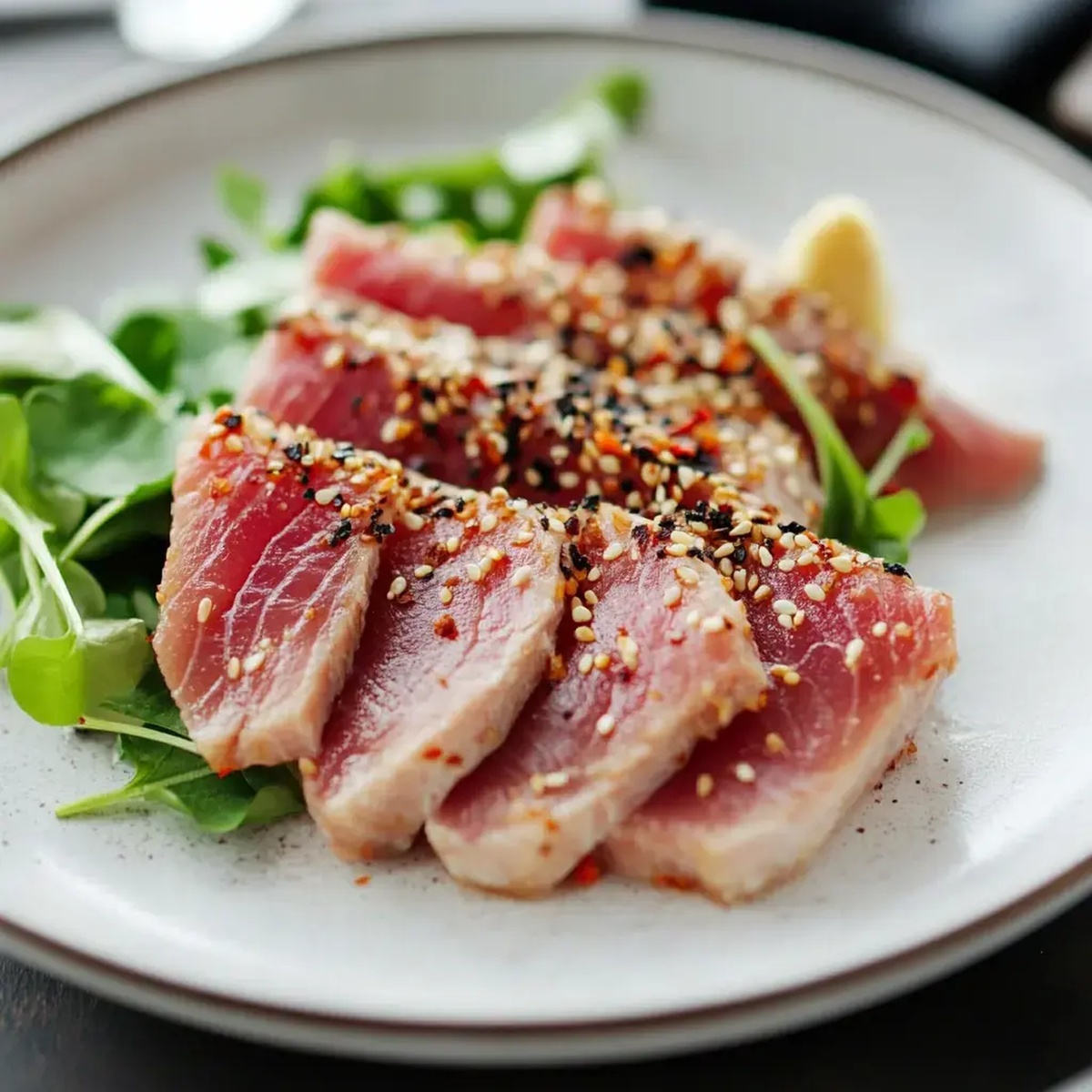
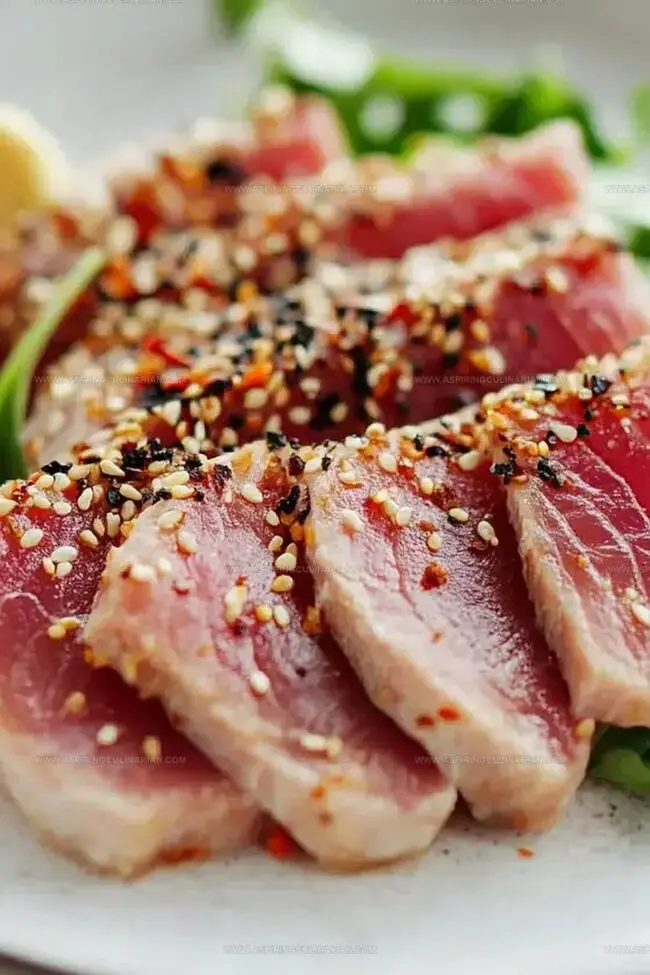
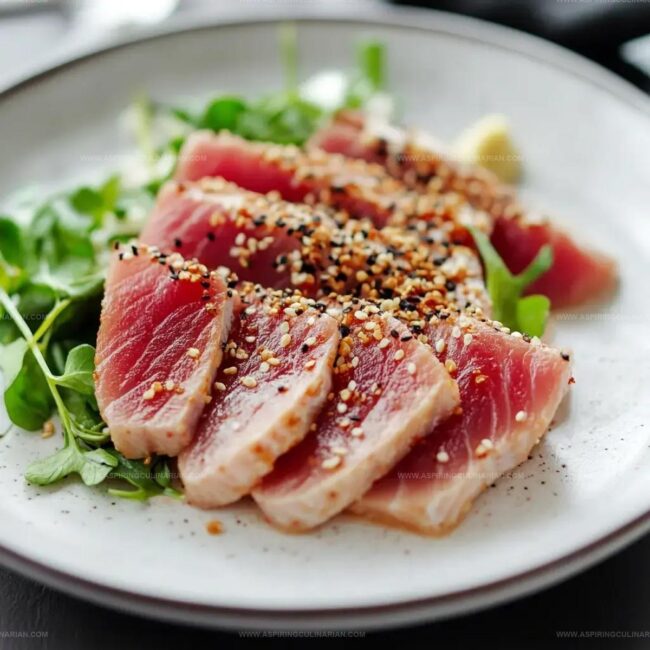
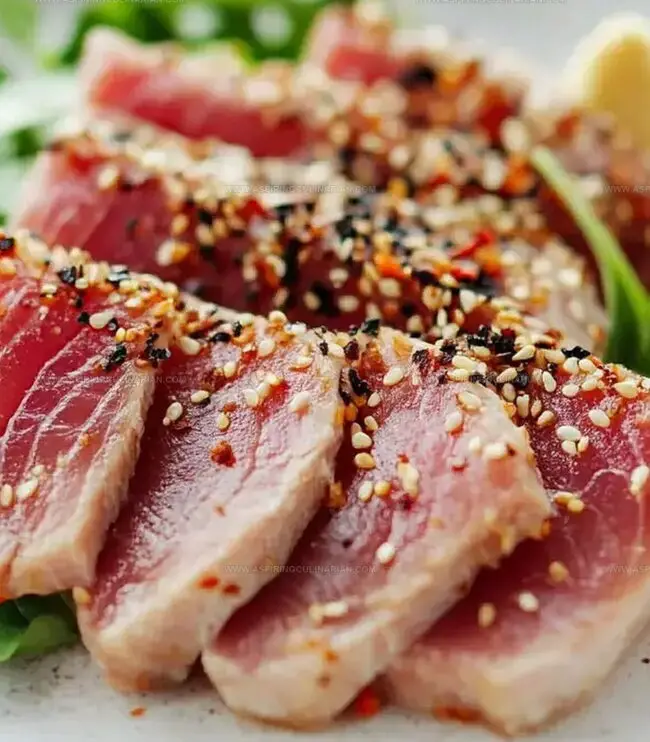
Nathaniel Brooks
Founder & Recipe Developer
Expertise
Farm-to-table cuisine, Seasonal recipe development, Culinary storytelling
Education
Ivy Tech Community College – Indianapolis, IN
Culinary Arts / Hospitality Administration & Events
Focused on hands-on training in classical and modern culinary techniques.
Nathaniel’s story starts in the foothills of the Appalachian Mountains, where farm stands, backyard gardens, and old family recipes shaped his love for real food. After graduating from Ivy Tech Community College in Indianapolis, he spent years working in farm-to-table kitchens, learning how to turn local, seasonal ingredients into something memorable.
Today, Nathaniel pours that same spirit into every single recipe on Aspiring Culinarian – recipes that feel real, comforting, and connected to the land. When he’s not in the kitchen, you’ll find him foraging wild herbs, chasing sunsets with his camera, or writing about the flavors that shaped his roots.